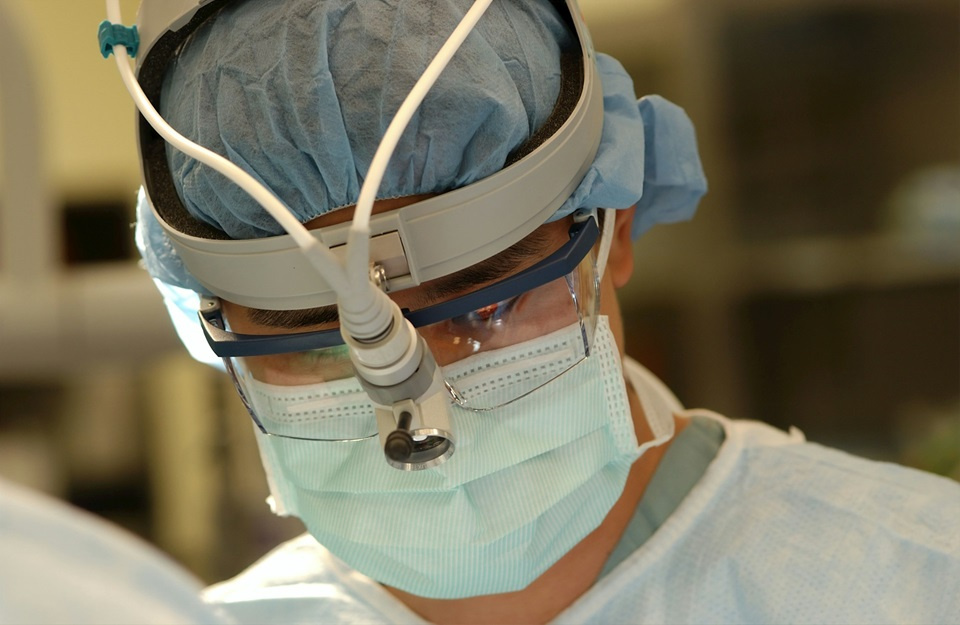
The Whipple procedure, also known as pancreaticoduodenectomy, is a complex surgical intervention primarily used to treat pancreatic cancer and other conditions affecting the pancreas, bile duct, or small intestine. As one of the most intricate operations in modern medicine, it involves removing the head of the pancreas, parts of the small intestine, gallbladder, and bile duct, followed by reconstructing the digestive system. In 2025, advancements like robotic-assisted techniques have made the Whipple procedure more accessible, with improved recovery times and outcomes at specialized centers like Mayo Clinic and UChicago Medicine. This article dives deep into the procedure, its applications, preparation, recovery, risks, and what patients can expect, providing a thorough resource for those researching this life-changing surgery.
What Is the Whipple Procedure?
-
- The Whipple procedure is a surgical treatment primarily used for tumors in the head of the pancreas, though it’s also applied to cancers of the bile duct, duodenum, or ampulla of Vater, as well as benign conditions like chronic pancreatitis or cysts. Named after Dr. Allen O. Whipple, who refined the technique in the 1930s, it involves removing multiple digestive organs and reconstructing the digestive tract to maintain function. The procedure aims to remove cancerous tissue and extend life expectancy, with a potential 5-year survival rate increase to 25% for pancreatic cancer patients, compared to 6% without surgery, according to WebMD.
Components Removed:- Head of the pancreas (about 50% of the organ)
- Duodenum (first part of the small intestine)
- Gallbladder and part of the bile duct
- Nearby lymph nodes
- In some cases, a portion of the stomach (pylorus-preserving Whipple avoids this)
Reconstruction: The surgeon reconnects the remaining pancreas, bile duct, and small intestine (jejunum) to restore digestion, ensuring bile and pancreatic enzymes flow into the digestive tract.
- The Whipple procedure is a surgical treatment primarily used for tumors in the head of the pancreas, though it’s also applied to cancers of the bile duct, duodenum, or ampulla of Vater, as well as benign conditions like chronic pancreatitis or cysts. Named after Dr. Allen O. Whipple, who refined the technique in the 1930s, it involves removing multiple digestive organs and reconstructing the digestive tract to maintain function. The procedure aims to remove cancerous tissue and extend life expectancy, with a potential 5-year survival rate increase to 25% for pancreatic cancer patients, compared to 6% without surgery, according to WebMD.
Who Needs the Whipple Procedure?
-
- The Whipple procedure is recommended for patients with specific conditions, but eligibility depends on the tumor’s location, stage, and the patient’s overall health. It’s most commonly performed for:
- Pancreatic Cancer: Tumors in the head or neck of the pancreas, where early detection is critical due to the cancer’s aggressive nature.
- Bile Duct Cancer: Cholangiocarcinoma affecting the bile duct near the pancreas.
- Duodenal Cancer: Tumors in the first part of the small intestine.
- Benign Conditions: Chronic pancreatitis, pancreatic cysts, or trauma-related injuries, as noted by Johns Hopkins Medicine.
Eligibility Criteria:
- Tumor confined to the pancreatic head without spread to major blood vessels or distant organs.
- Patient is healthy enough for major surgery (assessed via cardiac and pulmonary tests).
- Performed at high-volume centers (15–20 procedures annually), as recommended by the American Cancer Society.
- The Whipple procedure is recommended for patients with specific conditions, but eligibility depends on the tumor’s location, stage, and the patient’s overall health. It’s most commonly performed for:
Surgical Techniques for the Whipple Procedure
-
- In 2025, the Whipple procedure is performed using three main techniques, each with distinct benefits:
- Open Surgery: Involves a single large incision in the abdomen, allowing direct access to organs. It’s the traditional method, typically requiring a 7–10-day hospital stay.
- Laparoscopic Surgery: Uses several small incisions and a camera, reducing blood loss and recovery time. Patients may leave the hospital in 5–7 days.
- Robotic-Assisted Surgery: A minimally invasive approach where surgeons control robotic arms via a console, offering precision and smaller incisions. Mayo Clinic News Network highlights its benefits, including less pain and fewer wound complications.
Robotic Whipple, pioneered at centers like UChicago Medicine, is gaining traction for its quicker recovery and lower complication rates, though it requires highly skilled surgeons.
- In 2025, the Whipple procedure is performed using three main techniques, each with distinct benefits:
Preparation for the Whipple Procedure
-
- Preparing for the Whipple procedure involves a multidisciplinary approach to ensure optimal outcomes. Here’s how patients and medical teams prepare:
- Pre-Surgical Testing: Blood tests, CT scans, and endoscopic ultrasounds assess tumor size and spread. Cardiac and pulmonary evaluations ensure surgical fitness.
- Consultation with Specialists: Meet with a surgical oncologist, anesthesiologist, and dietitian to discuss risks, benefits, and post-surgery nutrition, as advised by Memorial Sloan Kettering Cancer Center.
- Lifestyle Adjustments: Stop smoking, manage blood sugar, and follow a high-protein diet to boost recovery potential.
- Mental Preparation: Discuss expectations with a counselor to address anxiety about major surgery.
High-volume centers conduct a diagnostic laparoscopy before surgery to confirm the cancer hasn’t spread, ensuring the procedure is viable.
- Preparing for the Whipple procedure involves a multidisciplinary approach to ensure optimal outcomes. Here’s how patients and medical teams prepare:
Recovery and Post-Surgery Care
-
- Recovery from the Whipple procedure is challenging but manageable with proper care. Patients typically stay in the hospital for 1–2 weeks, with full recovery taking 2–6 months. Key aspects include:
- Hospital Stay: Patients receive IV fluids and pain medication. Feeding tubes may be used until oral intake resumes, starting with clear liquids.
- Dietary Changes: Small, frequent meals (5–6 daily) and pancreatic enzyme supplements aid digestion, per Pancreatic Cancer Action Network. Avoid high-fat foods to reduce diarrhea and bloating.
- Monitoring Complications: Regular CT scans detect issues like pancreatic fistulas or abscesses, which affect a notable proportion of patients according to surgical literature on NCBI.
- Follow-Up Care: Chemotherapy (e.g., FOLFIRINOX) often starts 8–12 weeks post-surgery for Stage II patients, as noted in Mayo Clinic Connect discussions.
- Recovery from the Whipple procedure is challenging but manageable with proper care. Patients typically stay in the hospital for 1–2 weeks, with full recovery taking 2–6 months. Key aspects include:
Risks and Complications
-
- The Whipple procedure carries significant risks due to its complexity, though mortality rates have dropped to under 5% at specialized centers. Common complications include:
- Pancreatic Fistula: Leakage of pancreatic fluid, affecting a portion of patients and requiring targeted management.
- Infection: Abscesses or wound infections, treated with antibiotics or drainage.
- Delayed Gastric Emptying: Slow stomach emptying, causing nausea and bloating.
- Diabetes: Reduced insulin production if significant pancreatic tissue is removed.
- Malabsorption: Difficulty absorbing nutrients, leading to diarrhea or weight loss, as noted by MD Anderson.
Long-term, patients may need enzyme supplements and vitamin D or calcium to address deficiencies.
- The Whipple procedure carries significant risks due to its complexity, though mortality rates have dropped to under 5% at specialized centers. Common complications include:
Advancements in Whipple Procedure Techniques
-
- In 2025, innovations have enhanced the Whipple procedure’s safety and efficacy:
- Robotic Surgery: Offers 3D imaging and precise movements, reducing recovery time and complications, per Mayo Clinic News Network.
- Enhanced Recovery Protocols: New protocols at major centers improve survival rates and quality of life post-surgery.
- Preoperative Optimization: Neoadjuvant chemotherapy shrinks tumors, increasing eligibility for surgery.
These advancements make the procedure viable for older patients and those with chronic conditions, supported by peer-reviewed reports found on Dove Press.
- In 2025, innovations have enhanced the Whipple procedure’s safety and efficacy:
FAQ: Whipple Procedure in 2025
- What is the success rate of the Whipple procedure?
Successful procedures can boost 5-year survival rates to around 25% for certain pancreatic cancer patients, per clinical sources such as WebMD.How long is recovery?
Hospital stays last 1–2 weeks, with full recovery taking 2–6 months, depending on the surgical technique.Who is eligible?
Patients with tumors in the pancreatic head, no distant spread, and good overall health often qualify, according to the American Cancer Society.What are common complications?
Pancreatic fistulas, infections, and malabsorption are among the common complications; statistics and detailed guidance are available through medical literature on NCBI.Where should I get the procedure?
Choose high-volume centers like Mayo Clinic or UChicago Medicine with experienced multidisciplinary teams.
The Whipple procedure remains a cornerstone of pancreatic cancer treatment in 2025, offering hope through advanced techniques like robotic surgery and improved recovery protocols. While complex and high-risk, it can extend life and improve quality of life when performed by experienced surgeons at specialized centers. If you or a loved one are considering this surgery, consult a pancreatic specialist and explore resources on PanCAN. Share your questions or experiences in the comments, and check out related articles on pancreatic cancer treatments for more insights.










